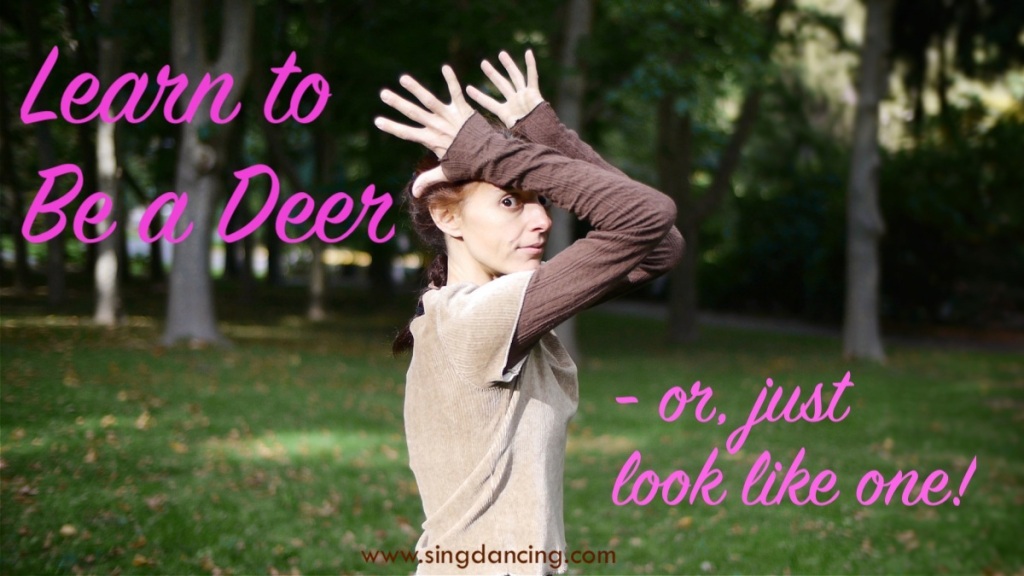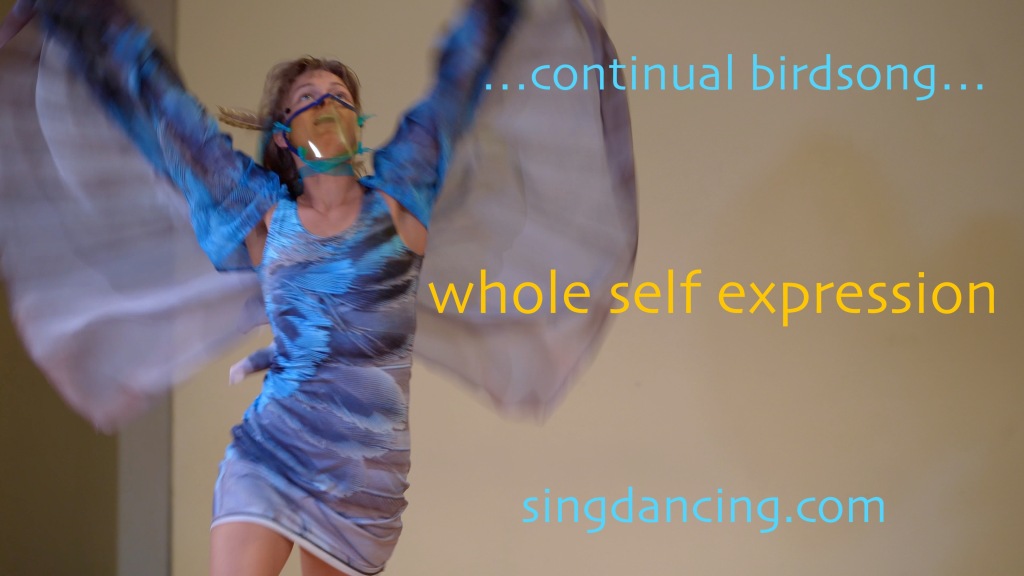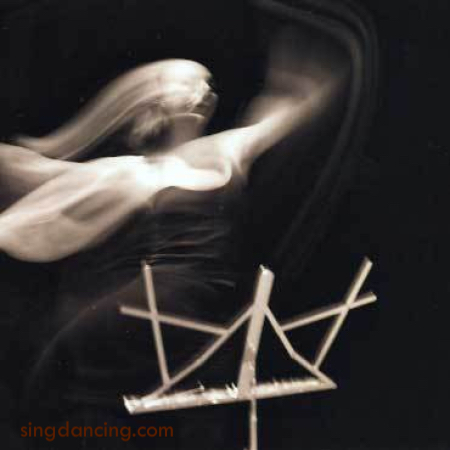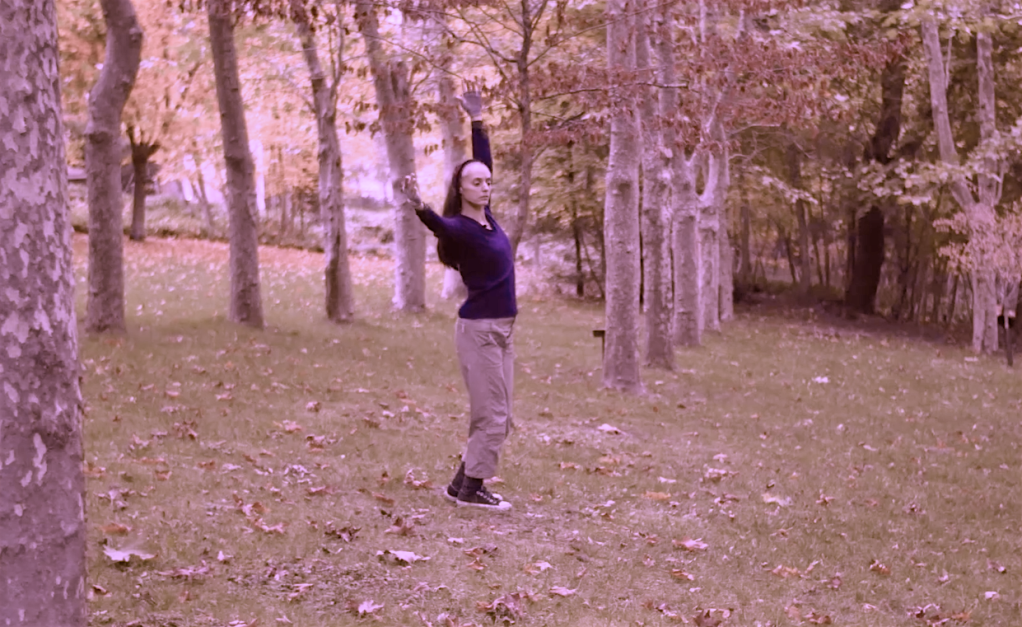VEGAN UTOPIAS BE LIKE…
“Beautiful! So much grace and elegance! It is mind-boggling that you can maintain such good breath control while performing these physically demanding movements. Congratulations, Vanessa and Shae!!”
~ Martin Majkut, conductor of the Rogue Valley Symphony, Ashland, OR, and the Queens Symphony Orchestra, New York, NY.”
What is Singdancing?
Singdancing is first and foremost a way to make music–
a singing technique for the entire body.
It’s energy-as-voice that forges through motion and emerges as music:
a cycle of SING-dance-sing.
See More Videos
To singdance is to allow movement to affect vocalization, in order to create melodic potentials which the ear can specify. Breath is exaggerated into a movement or a shape. Body positions affect the timbre and range of the voice. Motion creates a topography of force along which the voice flows, rushes, pools and spurts like water in a river bed. Thus the music and even the melody is created by and dependent on the movement. For example, in order to arpeggiate (rhythmically outline) chords, performers could stagger their movements.
See a Page from a Singdancing Score
How Do You Singdance?
If you sing, start by vocalizing your emotions without words. Allow your body to move along with it. Improvisationally, “to voice the movement of energy through the body” is another definition of singdancing. Everyone has INNER SONG!
Starting with dance, you can singdance by paying attention to when you would be able to inhale and exhale in a dance. Then just add voice to the exhalations, like adding ink to water. Let your movement affect that vocalization, and you are singdancing. It’s like vinyasa yoga, plus voice!
In addition to these improvisatory ways, which can be very empowering, I have created and practice a specific modern dance technique which continually considers the respiratory needs of the singdancer. Each movement is considered either an inhale or an exhale, depending on whether the abdominals are contracting. It’s like Martha Graham meets Stravinsky! Rhythms in singdance are naturally created by movement. Yet the force of the motion also gives a rough shape to a melodic line. From there it is a short step to deciding on exact intervals, such as either a major or minor seventh. The music emerges with the dance, in splashes!
The reason this works is due to the nature of the vocal folds. The voice makes sound because the vocal folds open and close hundreds of times per second: for example, if your vocal folds open and close 440 times in one second, you sing the pitch A 440. Little puffs of air are released every time the vocal folds open and close; those puffs create the vibrations in the air that make the sound. Therefore you need more air to sing higher notes; also to sing louder (more air molecules per puff= more volume, same frequency). In other words, when a singdanced move pushes out a lot of air, that air can be channeled into making a higher note or a louder note. The more air, the higher and louder the note can be. This is how dancing (specifically, the intersection of movement and breath) really can shape or interlock with melodies (by affecting the voice’s pitch potential). A musical ear can fine-tune the effects into specific pitches.
Subscribe to Singdancing! Tell me your email address
and I’ll send you my quarterly e-newsletter.
See the continual birdsong gallery!





